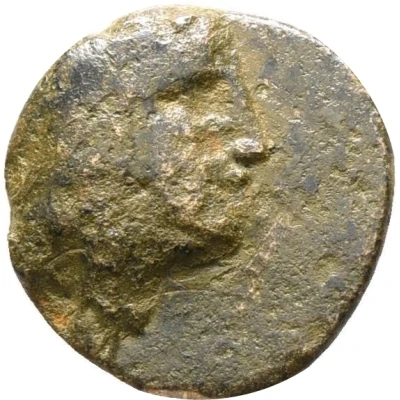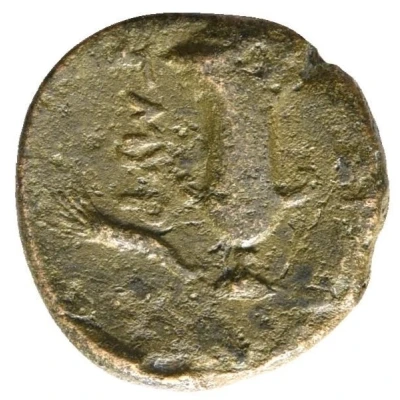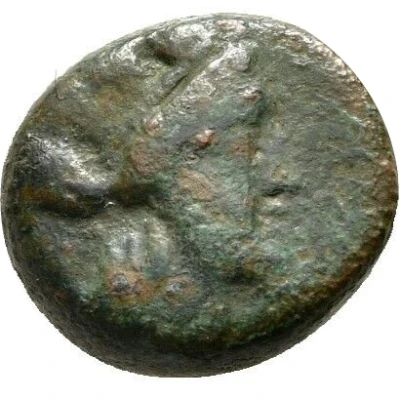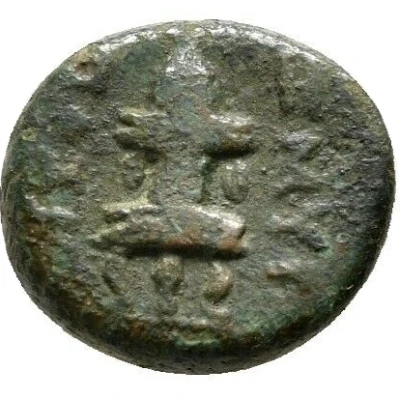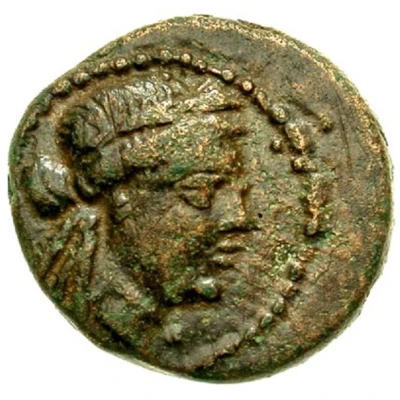
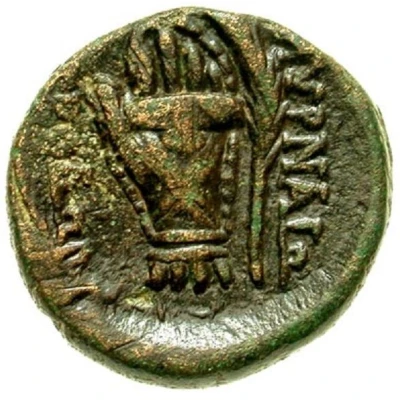

© Agora Auctions
Chalkon - various magistrates 190 BC - 50 BC
| Bronze | 2.6 g | 12 mm |
| Issuer | Smyrna (Ionia) |
|---|---|
| Type | Standard circulation coin |
| Years | 190 BC - 50 BC |
| Value | Chalkon (1⁄48) |
| Currency | Drachm |
| Composition | Bronze |
| Weight | 2.6 g |
| Diameter | 12 mm |
| Shape | Round (irregular) |
| Technique | Hammered |
| Orientation | Variable alignment ↺ |
| Demonetized | Yes |
| Updated | 2024-10-09 |
| Numista | N#328721 |
|---|---|
| Rarity index | 97% |
Reverse
Two hands with caestus, flanked by a laurel branch on each side; name of the city above, name of magistrate below.
Script: Greek
Lettering:
ΣΜΥΡΝΑΙΩΝ
ΜΗΤΡΟΔΩΡΟΣ
Translation:
Smyrna
Metrodoros, magistrate
Comment
Made of leather straps and sometimes improved with metal parts, the caestus is an ancestor of the brass knuckles. Its use was common in the practice of the pankration, during gladiator fights or hand-to-hand combat. Its use was banned towards the end of the first century BC.
Several variations of this type are known with different magistrates names.
Full range of catalog numbers are: SNG Cop 1166-1173
Interesting fact
One interesting fact about the Chalkon coin is that it was used as a form of currency in the ancient city of Smyrna (now known as Izmir, Turkey) during the Hellenistic period. Despite being made of bronze, a relatively inexpensive material, the Chalkon coin was valued at a high denomination, indicating the strong economic status of Smyrna during that time. Additionally, the fact that various magistrates were featured on the coin suggests that it was a symbol of the city's political and administrative power.
